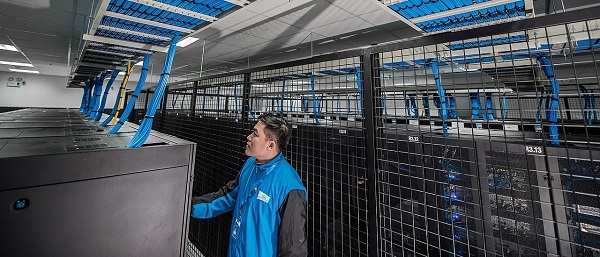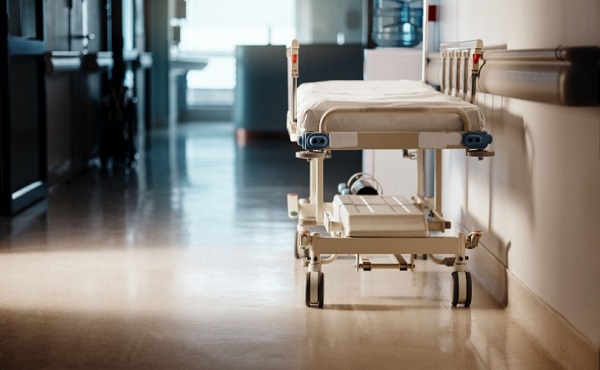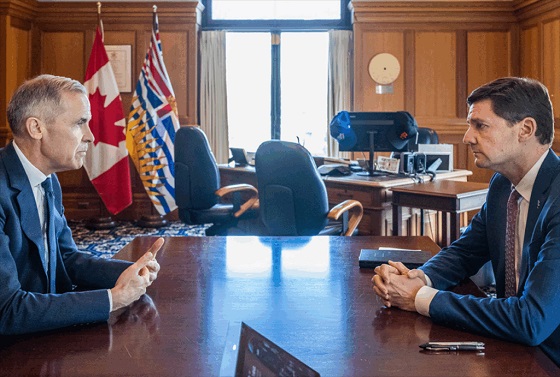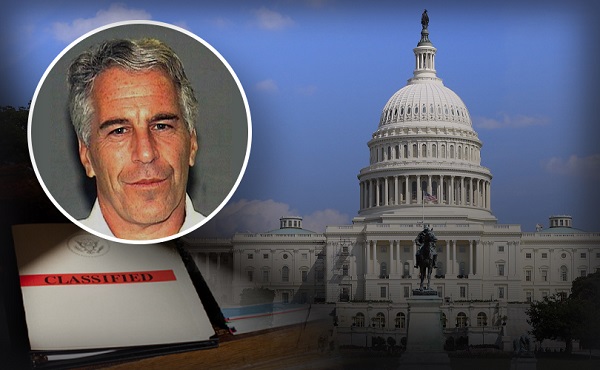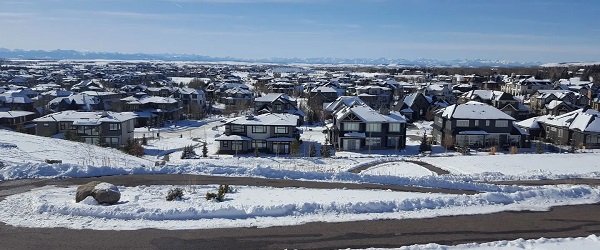Alberta
Education Minister Adriana LaGrange announces nearly 25,000 new and upgraded spaces for students
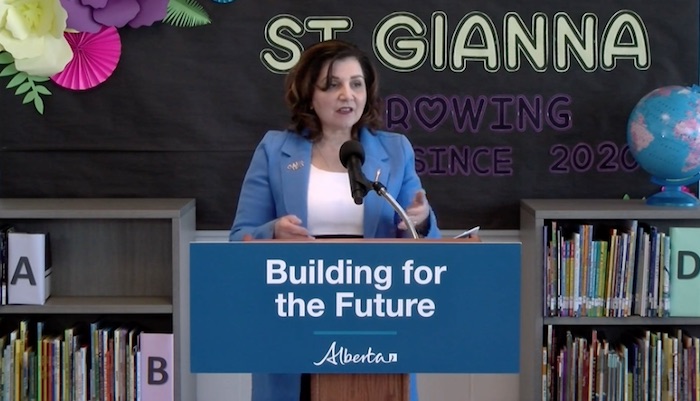
Investing in new schools, modernized spaces
Alberta’s government is investing $2.3 billion over the next three years, for new and modernized classrooms.
Budget 2023 supports 58 projects, which includes 13 full construction projects, 20 design, 14 planning and 11 pre-planning projects. In total, there will be nearly 25,000 new and additional spaces for students across Alberta – 9,400 new spaces and more than 15,500 student upgraded spaces. This includes approximately 4,500 new and upgraded spaces in Calgary, 4,100 in Edmonton and 16,300 for the rest of the province.
“Alberta’s young learners are the community and business leaders of tomorrow. They need the right spaces to gain the tools and skills needed to prepare for their bright futures. By investing in our schools, we’re investing in our students while at the same time creating more jobs and supporting the local economy.”
This investment in education infrastructure includes:
- $372 million for construction and design projects:
- 10 new schools
- 16 replacement schools
- seven modernizations
- $4 million to support planning activities such as site analysis and scope development for 14 projects
- $1 million to pre-plan 11 conceptual projects that are anticipated to become high-priority needs for school jurisdictions
- $1 billion to continue work on previously announced projects
- $300 million over three years in school authority self-directed capital projects
- $279 million to support the maintenance and renewal of existing school buildings through the Capital Maintenance and Renewal Program
- $171 million to support public charter school infrastructure, including investment for a charter hub in Calgary
- $43 million to fund facility upgrades for successful collegiate school applicants
- $93 million for the modular classroom program to address urgent space needs across the province
“The Alberta government is investing in critical infrastructure projects that include upgrading and building high-quality schools to ensure Albertans can send their children to schools in their local communities. Our focus is on ensuring these projects are delivered on time, on budget and where they’re needed.”
The availability of suitable sites has been one of the biggest roadblocks causing delays to school projects. That’s why, through Budget 2023, Alberta’s government is creating a new School Planning Program that will serve as a transparent “pipeline” for upcoming school projects to begin as soon as formal construction funding is approved. Fourteen school projects will begin planning and site development through this new program while a further 11 projects will receive pre-planning funding to assist with developing scope options.
The planning program will allow for the further development of project scope and site investigation work. It will also help to clarify potential risks and identify mitigating strategies and costs. The goal is to provide school boards with the resources they need to remove barriers and better position the project for design consideration and construction approval in future budget cycles, which is expected to reduce costs and minimize schedule disruptions and delays.
“The Calgary Catholic Board of Trustees is grateful for the capital projects announced for the Calgary Catholic School District, which includes full funding for the K-9 school in Nolan Hill to serve this rapidly growing community. We anticipate receiving the full construction funding for the Rangeview high school and Chestermere K-9 school as soon as possible, after the design process is completed. These projects need urgent attention given the critical need for school infrastructure and CCSD’s high utilization rate in these communities. CCSD appreciates the pre-planning commitment towards the construction of the K-9 school in Redstone, the addition/enhancement of Bishop McNally High School and the construction of a new west-end high school.”
“On behalf of CBE students and their families, we thank the Government of Alberta for the capital plan announcement. These extraordinary and timely investments in infrastructure are vital to support student learning opportunities within our system.”
“This is an exciting day for Elk Island Public Schools, for the community and especially for students of both École Campbelltown and Sherwood Heights Junior High. A modern, well-equipped and efficient building will allow us to continue to offer the quality education students need to succeed in the classroom and will help ease the growth pressures we are facing in Sherwood Park.”
Quick facts:
- Full construction funding activities include construction and post-occupancy review.
- Design funding activities include the preparation of construction tender documents such as drawings and specifications.
- Planning funding activities include site analysis and scope development activities.
- Pre-planning funding allows a conceptual project to define scope elements, programming priorities and includes activities such as community engagement.
- To support the decision-making process for delivering infrastructure projects, the Ministry of Infrastructure passed the Infrastructure Accountability Act in December 2021. This act outlines how the province prioritizes projects for the annual capital plan.
- As legislated by the act, the government also published Building Forward: Alberta’s 20-Year Strategic Capital Plan in December 2021, providing a blueprint for long-term infrastructure investment and development in Alberta.
- The government’s budget decisions are made in accordance with the act and are guided by the strategic capital plan to ensure future capital investments benefit Albertans.
- Government partners, such as municipalities and school boards, will also be able to plan for capital funding knowing the long-term direction of government.
Budget 2023 school projects – full construction funding (13):
| Community | School division | Project type/Name |
| Airdrie | Conseil scolaire FrancoSud | new secondary school |
| Calgary | Calgary Board of Education | modernization of John G. Diefenbaker High School |
| Calgary | Calgary Roman Catholic Separate School Division | new K-9 school in Nolan Hill |
| Edmonton | Conseil scolaire Centre-Nord | solution for École Michaëlle-Jean and École Gabrielle-Roy |
| Edmonton | Edmonton Public School Board | new K-9 school in Edgemont |
| Lethbridge | Holy Spirit Roman Catholic Separate School Division | new K-6 school in west Lethbridge |
| Lethbridge | Conseil scolaire FrancoSud | École La Vérendrye gym project |
| Okotoks | Christ the Redeemer Catholic Separate School Division | replacement of École Good Shepherd School |
| Penhold | Chinook’s Edge School Division | replacement of Penhold Elementary School |
| Raymond | Westwind School Division | new high school |
| Sherwood Park | Elk Island School Division | solution for Sherwood Park |
| Valleyview | Northern Gateway School Division | solution for Valleyview |
| Waskatenau | Lakeland Roman Catholic Separate School Division | replacement of Holy Family Catholic School |
Budget 2023 school projects – design funding (20):
| Community | School division | Project type/Name |
| Airdrie | Rocky View School Division | new K-8 school in southwest Airdrie |
| Barrhead | Pembina Hills School Division | modernization and rightsizing of Barrhead Composite High School |
| Blackfalds | Red Deer Catholic Separate School Division | new K-5 school |
| Bow Island / Burdett | Prairie Rose School Division | solution for Bow Island and Burdett |
| Breton | Wild Rose School Division | modernization and rightsizing of Breton High School and demolition of Breton Elementary School |
| Brooks | Grasslands School Division | replacement of Brooks Junior High School |
| Chestermere | Calgary Roman Catholic Separate School Division | new K-9 school |
| Calgary | Calgary Roman Catholic Separate School Division | new high school in Rangeview |
| Edmonton | Edmonton Catholic Separate School Division | solution for Rundle Heights |
| Edmonton | Edmonton Public School Board | new junior/senior high school in Glenridding Heights |
| Fort McMurray | Conseil scolaire Centre-Nord | replacement of K-12 École Boréale |
| Lac La Biche | Northern Lights School Division | replacement of Vera M. Welsh School |
| Leduc | Black Gold School Division | modernization of École Corinthia Park School |
| Mallaig | St. Paul School Division | replacement of École Mallaig School |
| Medicine Hat | Medicine Hat Roman Catholic Separate School Division | replacement of St. Francis Xavier School |
| Nanton | Livingstone Range School Division | solution for Nanton |
| Red Earth Creek | Peace River School Division | replacement of Red Earth Creek School |
| Spruce Grove | Parkland School Division | replacement of Spruce Grove Composite High School |
| Taber | Horizon School Division | modernization of the W.R. Myers and D.A. Ferguson schools |
| Wainwright | Buffalo Trail School Division | replacement of Wainwright School |
Budget 2023 – School Planning Program projects (14):
| Community | School division | Project type/Name |
| Airdrie | Rocky View School Division | new grades 9-12 school |
| Calgary | Calgary Board of Education | modernization of Annie Gale School |
| Calgary | Calgary Board of Education | new high school in Cornerstone |
| Coalhurst | Palliser School Division | modernization of Coalhurst High School |
| Donnelly | High Prairie School Division | G. P. Vanier School |
| Edmonton | Edmonton Catholic Separate School Division | new K-9 school in Heritage Valley Cavanagh |
| Edmonton | Edmonton Public School Board | new K-6 school in Rosenthal |
| Edmonton | Edmonton Public School Board | new elementary school in Glenridding Heights |
| Fort McMurray | Fort McMurray School Division | modernization of Westwood Community High School |
| Grande Prairie | Peace Wapiti School Division | new high school north of Grande Prairie |
| Lethbridge | Lethbridge School Division | modernization of Galbraith Elementary School |
| Okotoks | Foothills School Division | new high school |
| Stettler | Clearview School Division | modernization and addition at Stettler Middle School |
| Strathmore | Golden Hills School Division | replacement of Westmount School |
Budget 2023 – Pre-Planning Program projects (11):
| Community | School division | Project type/Name |
| Calgary | Calgary Board of Education | modernization of A.E. Cross School |
| Calgary | Calgary Board of Education | modernization of Sir John A. Macdonald School |
| Calgary | Calgary Board of Education | new Saddle Ridge middle school |
| Calgary | Calgary Roman Catholic Separate School Division | new elementary school in Redstone |
| Calgary | Calgary Roman Catholic Separate School Division | addition at Bishop McNally High School |
| Calgary | Calgary Roman Catholic Separate School Division | new west Calgary high school |
| Chestermere | Rocky View School Division | new K-9 school |
| Cochrane | Rocky View School Division | new K-5/K-8 |
| Edmonton | Edmonton Catholic Separate School Division | new north K-9 school |
| Edmonton | Edmonton Public School Division | new junior high school in Pilot Sound/McConachie |
| Red Deer | Red Deer Public Schools | new northeast middle school |
Alberta
Alberta bill would protect freedom of expression for doctors, nurses, other professionals

From LifeSiteNews
‘Peterson’s law,’ named for Canadian psychologist Jordan Peterson, was introduced by Alberta Premier Danielle Smith.
Alberta’s Conservative government introduced a new law that will set “clear expectations” for professional regulatory bodies to respect freedom of speech on social media and online for doctors, nurses, engineers, and other professionals.
The new law, named “Peterson’s law” after Canadian psychologist Jordan Peterson, who was canceled by his regulatory body, was introduced Thursday by Alberta Premier Danielle Smith.
“Professionals should never fear losing their license or career because of a social media post, an interview, or a personal opinion expressed on their own time,” Smith said in a press release sent to media and LifeSiteNews.
“Alberta’s government is restoring fairness and neutrality so regulators focus on competence and ethics, not policing beliefs. Every Albertan has the right to speak freely without ideological enforcement or intimidation, and this legislation makes that protection real.”
The law, known as Bill 13, the Regulated Professions Neutrality Act, will “set clear expectations for professional regulatory bodies to ensure professionals’ right to free expression is protected.”
According to the government, the new law will “Limit professional regulatory bodies from disciplining professionals for expressive off-duty conduct, except in specific circumstances such as threats of physical violence or a criminal conviction.”
It will also restrict mandatory training “unrelated to competence or ethics, such as diversity, equity, and inclusion training.”
Bill 13, once it becomes law, which is all but guaranteed as Smith’s United Conservative Party (UCP) holds a majority, will also “create principles of neutrality that prohibit professional regulatory bodies from assigning value, blame or different treatment to individuals based on personally held views or political beliefs.”
As reported by LifeSiteNews, Peterson has been embattled with the College of Psychologists of Ontario (CPO) after it mandated he undergo social media “training” to keep his license following posts he made on X, formerly Twitter, criticizing Trudeau and LGBT activists.
He recently noted how the CPO offered him a deal to “be bought,” in which the legal fees owed to them after losing his court challenge could be waived but only if he agreed to quit his job as a psychologist.
Early this year, LifeSiteNews reported that the CPO had selected Peterson’s “re-education coach” for having publicly opposed the LGBT agenda.
The Alberta government directly referenced Peterson’s (who is from Alberta originally) plight with the CPO, noting “the disciplinary proceedings against Dr. Jordan Peterson by the College of Psychologists of Ontario, demonstrate how regulatory bodies can extend their reach into personal expression rather than professional competence.”
“Similar cases involving nurses, engineers and other professionals revealed a growing pattern: individuals facing investigations, penalties or compulsory ideological training for off-duty expressive conduct. These incidents became a catalyst, confirming the need for clear legislative boundaries that protect free expression while preserving professional standards.”
Alberta Minister of Justice and Attorney General Mickey Amery said regarding Bill 13 that the new law makes that protection of professionals “real and holds professional regulatory bodies to a clear standard.”
Last year, Peterson formally announced his departure from Canada in favor of moving to the United States, saying his birth nation has become a “totalitarian hell hole.”
Alberta
‘Weird and wonderful’ wells are boosting oil production in Alberta and Saskatchewan
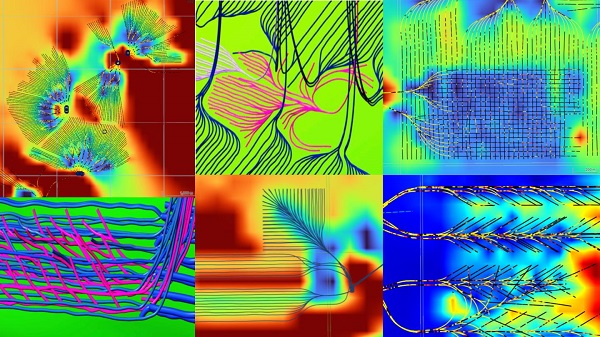
From the Canadian Energy Centre
Multilateral designs lift more energy with a smaller environmental footprint
A “weird and wonderful” drilling innovation in Alberta is helping producers tap more oil and gas at lower cost and with less environmental impact.
With names like fishbone, fan, comb-over and stingray, “multilateral” wells turn a single wellbore from the surface into multiple horizontal legs underground.
“They do look spectacular, and they are making quite a bit of money for small companies, so there’s a lot of interest from investors,” said Calin Dragoie, vice-president of geoscience with Calgary-based Chinook Consulting Services.
Dragoie, who has extensively studied the use of multilateral wells, said the technology takes horizontal drilling — which itself revolutionized oil and gas production — to the next level.
“It’s something that was not invented in Canada, but was perfected here. And it’s something that I think in the next few years will be exported as a technology to other parts of the world,” he said.
Dragoie’s research found that in 2015 less than 10 per cent of metres drilled in Western Canada came from multilateral wells. By last year, that share had climbed to nearly 60 per cent.
Royalty incentives in Alberta have accelerated the trend, and Saskatchewan has introduced similar policy.
Multilaterals first emerged alongside horizontal drilling in the late 1990s and early 2000s, Dragoie said. But today’s multilaterals are longer, more complex and more productive.
The main play is in Alberta’s Marten Hills region, where producers are using multilaterals to produce shallow heavy oil.
Today’s average multilateral has about 7.5 horizontal legs from a single surface location, up from four or six just a few years ago, Dragoie said.
One record-setting well in Alberta drilled by Tamarack Valley Energy in 2023 features 11 legs stretching two miles each, for a total subsurface reach of 33 kilometres — the longest well in Canada.
By accessing large volumes of oil and gas from a single surface pad, multilaterals reduce land impact by a factor of five to ten compared to conventional wells, he said.
The designs save money by skipping casing strings and cement in each leg, and production is amplified as a result of increased reservoir contact.
Here are examples of multilateral well design. Images courtesy Chinook Consulting Services.
Parallel
Fishbone
Fan
Waffle
Stingray
Frankenwells
-

 Health2 days ago
Health2 days agoCDC’s Autism Reversal: Inside the Collapse of a 25‑Year Public Health Narrative
-
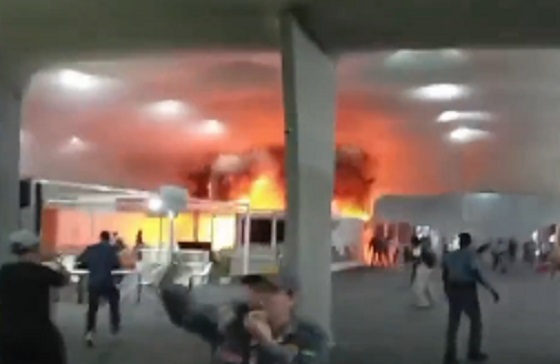
 Daily Caller2 days ago
Daily Caller2 days agoBREAKING: Globalist Climate Conference Bursts Into Flames
-
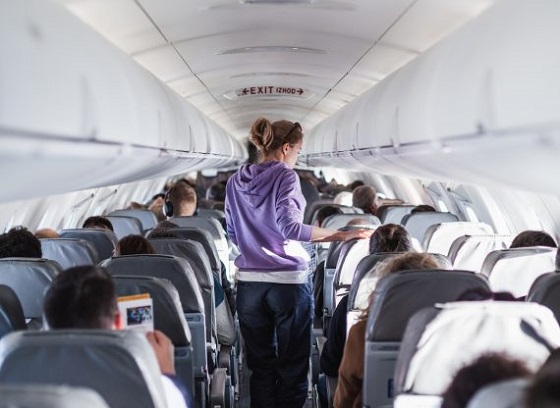
 Business15 hours ago
Business15 hours agoNew airline compensation rules could threaten regional travel and push up ticket prices
-

 Crime2 days ago
Crime2 days agoCocaine, Manhunts, and Murder: Canadian Cartel Kingpin Prosecuted In US
-
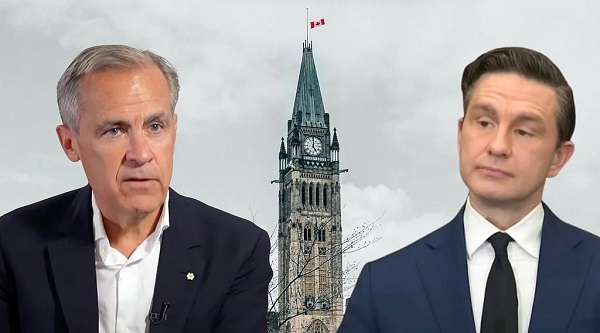
 Bruce Dowbiggin2 days ago
Bruce Dowbiggin2 days agoBurying Poilievre Is Job One In Carney’s Ottawa
-

 Health2 days ago
Health2 days agoBREAKING: CDC quietly rewrites its vaccine–autism guidance
-

 Great Reset1 day ago
Great Reset1 day agoEXCLUSIVE: The Nova Scotia RCMP Veterans’ Association IS TARGETING VETERANS with Euthanasia
-
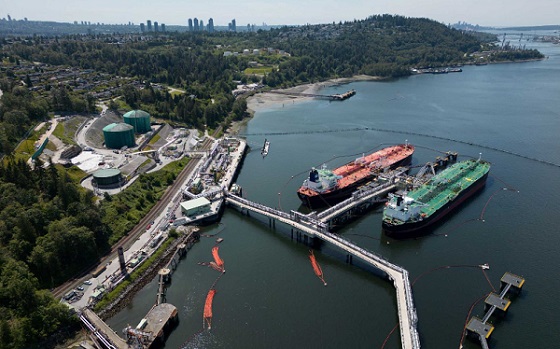
 Energy2 days ago
Energy2 days agoHere’s what they don’t tell you about BC’s tanker ban











